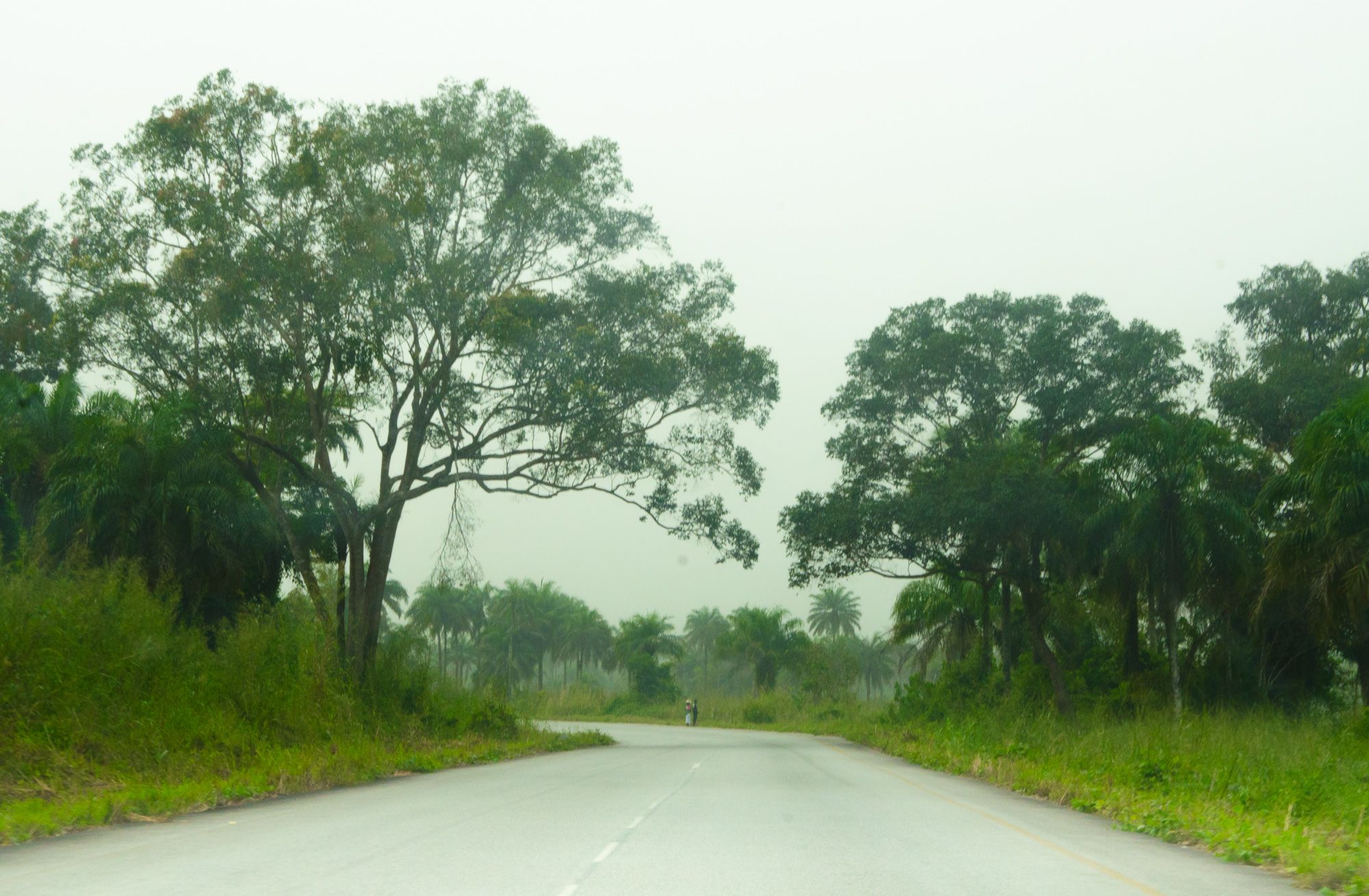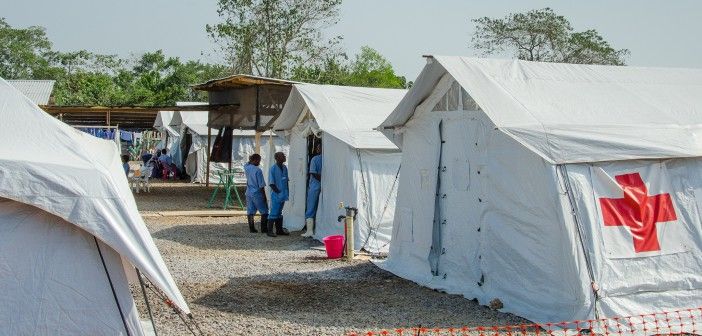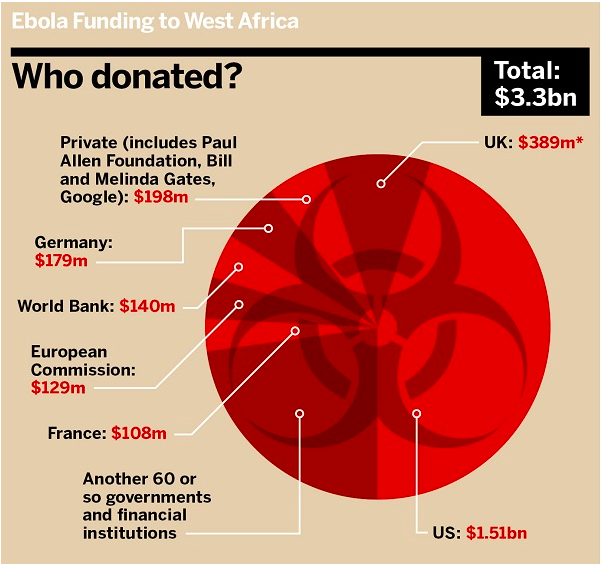Much is often made of African corruption and one of the latest such scandals is some $3 million gone missing in aid donations given to fight the Ebola outbreak in Sierra Leone.
But Sierra Leone’s Minister of Health, Abubakarr Fofanah, has turned the accountability tables around by requesting an audit of the international community’s claimed expenditures to West Africa during this tragedy.
Far more than $3 million in foreign aid contributions have been donated in support of the Ebola response and much of it appears to have never reached the intended recipients in Sierra Leone. On a recent reporting trip there – in which I documented the lack of payment of local health workers on the front lines of the epidemic – I could not determine where a significant portion of this aid money went.
The largest donors to the cause are the U.S. and the U.K., who together contributed more than half of the $3.3 billion in total funds thus far. If you’re a taxpayer, this is your money. So here’s a run down of why it’s hard follow.
First, it’s inherently complicated to track large donations. It’s not like millions can go straight to one guy on the ground. Rich governments and big private donors pledge millions, which go to large groups who determine how to spend that money, who pass the funds to other groups to take action, or who give the money to more groups to take action, etcetera.
A few institutions give their donations directly to the governments of affected countries—but that’s generally rare when the countries are among the poorest in the world (such as those hit hard by Ebola). As a result of all of the parties involved, tracking donations is like taking a turbulent trip down white water rapids. Funds merge, divide, and change over time.
Let’s start at the source of the river: Ask how much money went to the Ebola response in West Africa. According to the most recent report from the UN’s special envoy on Ebola, donors have pledged $5.1 billion. According to the World Bank, it’s more: $6.7 billion. No one is lying. Agencies differ because donations are ongoing, and because different groups count different categories of funds. But in either case, only about half of the amount pledged has left donor pockets.
Better then to go with what’s been “committed” or “contributed”. In other words, how much money has at least made the first step to bank accounts of organizations that will further spend it. (For a better description of these categories see this piece by global health policy expert, Karen Grépin.)
The United Nation’s online financial tracker from the Office for the Coordination of Humanitarian Affairs is helpful in this regard. It puts Ebola donations to West Africa at $3.3 billion. According to this source, the US government donated 1.58 billion.
Yet that differs with the total on the US’s Ebola Response report. I spoke with the US government about the discrepency, and in part, I learned it’s because the US counts Ebola funds going outside of West Africa as well. Meanwhile, the UK’s aid agency, the Department for International Development (DFID), tabulates a different number from that listed by the UN because they’ve not yet notified people at the UN’s tracker.
But DFID told me they’d prefer I use their figure of $668 million, which includes funds allocated for Ebola recovery. But “allocated” and “committed” and “contributed” are meaningful words. Better to go with another DFID figure, $389 million, because it more closely matches how the totals of other countries in the UN’s report are calculated. See the results in the red pie chart above.
Head spinning? Hold on, that’s just the first step. I wanted to know who received donor funds.
A February 2015 report from the UN shows how $1.4 billion of the donations have been allocated, or earmarked for the first round of organizations on the receiving end. (UNICEF is the UN’s fund for children; WFP is the UN’s World Food Program; IFRC is the Red Cross; MSF is Doctors without Borders; MPTF is a trust fund where dozens of countries and some private donors pool their money; and “No detail” is literally listed as such in the report.) See these results in the multicolored pie chart above.
The other half of the $3.3 billion? Heck, beats me. What about the amounts of money that went to each of the three affected countries—Liberia, Sierra Leone, and Guinea? A UN press officer apologized: They do not track such figures.
I looked to large organizations and agencies that received funds to learn more. According to the World Food Program, the agency has gotten $322 million. They bullet-point several achievements in a recent report, such as transporting 13,700 passengers and distributing food to hundreds of thousands of people. But they don’t provide line items that detail who exactly pocketed that money, and how much, for these services.
Just one more example: According to their website, the UK government (DFID) has thus far spent $46 million on a single Ebola Treatment Unit in Sierra Leone operated by the NGO Save the Children.
When I wrote Save the Children to see how they spent DFID’s money, they replied that I was wrong to allege that they spent that amount. In fact, they’ve spent $18.9 million and treated 280 Ebola patients at their unit. Staff salaries and living expenses in Sierra Leone amounted to some $12 million, the press officer wrote. The remainder covered costs of equipping the hospital, transport of medical staff and hospital overhead.
Is $12 million on salaries and living expenses justifiable when just 280 patients were treated over a few months? I don’t know the answer, but perhaps it’s a conversation worth having.
I spent most of my time in Sierra Leone with local nurses in the national health system who cared for twice as many patients. These nurses live in one-room houses, share mattresses, and can’t afford shoes for their children. They are desperate for $80 in so-called hazard pay per week.
Might some donor money have been better spent on the local health system? Maybe. Maybe not. But if budgets continue to be opaque, it’s impossible to learn how to optimize aid to countries that desperately need it. As Alexander Kentikelenis, a sociologist at the University of Cambridge says, “There is no shortage of good intentions. The question is to what extent NGOs help in the ways that really matter.”
Last year, an economist at the Center for Global Development, Vijaya Ramachandran, said something similar after she found it impossible to track some $6 billion in donations to Haiti after the earthquake: “If we knew how it was spent, we could learn lessons for other disasters.”
Seven years earlier, the authors of a report in the journal Health Policy and Planning wrote, “The fragmented, complicated, messy and inadequately tracked state of global health finance requires immediate attention.” It’s time, the authors concluded, to “critically examine who benefits from the rise in global health spending.”









